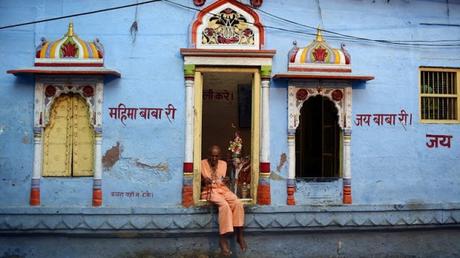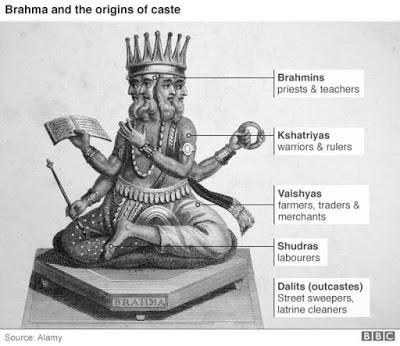
India's caste system is among the world's oldest forms of surviving social stratification. The system which divides Hindus into rigid hierarchical groups based on their karma (work) and dharma (the Hindi word for religion, but here it means duty) is generally accepted to be more than 3,000 years old.
How did caste come about? Manusmrti, widely regarded to be the most important and authoritative book on Hindu law and dating back to at least 1,000 years before Christ was born, "acknowledges and justifies the caste system as the basis of order and regularity of society".
The caste system divides Hindus into four main categories - Brahmins, Kshatriyas, Vaishyas and the Shudras. Many believe that the groups originated from Brahma, the Hindu God of creation.
At the top of the hierarchy were the Brahmins who were mainly teachers and intellectuals and are believed to have come from Brahma's head. Then came the Kshatriyas, or the warriors and rulers, supposedly from his arms. The third slot went to the Vaishyas, or the traders, who were created from his thighs. At the bottom of the heap were the Shudras, who came from Brahma's feet and did all the menial jobs.
The main castes were further divided into about 3,000 castes and 25,000 sub-castes, each based on their specific occupation.
Outside of this Hindu caste system were the achhoots - the Dalits or the untouchables.

How does caste work?
For centuries, caste has dictated almost every aspect of Hindu religious and social life, with each group occupying a specific place in this complex hierarchy.
Rural communities have long been arranged on the basis of castes - the upper and lower castes almost always lived in segregated colonies, the water wells were not shared, Brahmins would not accept food or drink from the Shudras, and one could marry only within one's caste.
The system bestowed many privileges on the upper castes while sanctioning repression of the lower castes by privileged groups.
Often criticised for being unjust and regressive, it remained virtually unchanged for centuries, trapping people into fixed social orders from which it was impossible to escape.
Despite the obstacles, however, some Dalits and other low-caste Indians, such as BR Ambedkar who authored the Indian constitution, and KR Narayanan who became the nation's first Dalit president, have risen to hold prestigious positions in the country.
Historians, though, say that until the 18th Century, the formal distinctions of caste were of limited importance to Indians, social identities were much more flexible and people could move easily from one caste to another.
What's in a name?
If you were born into the Kshatrayis or warrior caste, you would use the surname or middle name 'Singh', meaning lion. Women of this caste would use the name 'Kaur' meaning princess. Many Indian surnames are derived for their caste or religion.
Achhoots
I am a Kaur; a princess,
I will marry a Singh, a warrior.
That's how it was,
how it is,
how it always will be.
I pay you no attention,
you are not fit to clean the dirt from my feet.
Achhoot - untouchable
And yet you seem like me.
Your skin is like mine.
Your heart beats like mine.
Are you a human being like me,
or a sub-species to be scorned, derided?
Perhaps you recite the Manusmrti
as you sweep the street.
Perhaps you study calculus
at night before you sleep.
My world is far removed form yours,
so I will never know,
I have to look down on you
because they told me so.
Thank you for reading. Adele Email ThisBlogThis!Share to TwitterShare to Facebook
Reactions:
